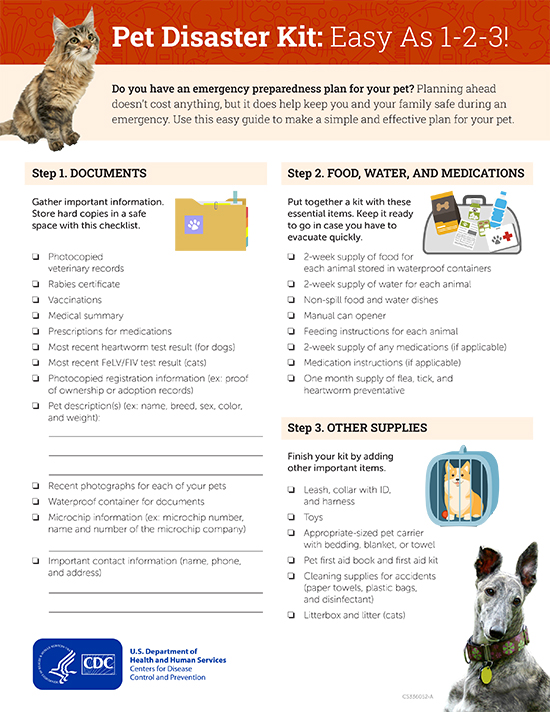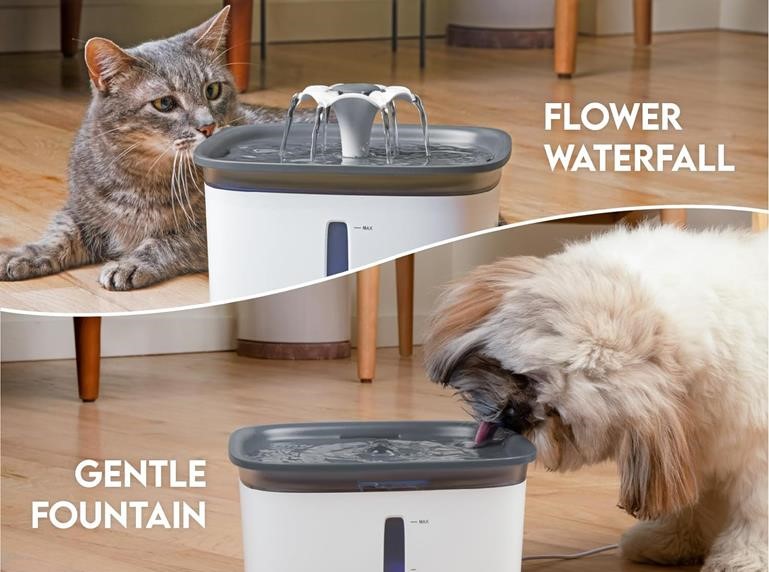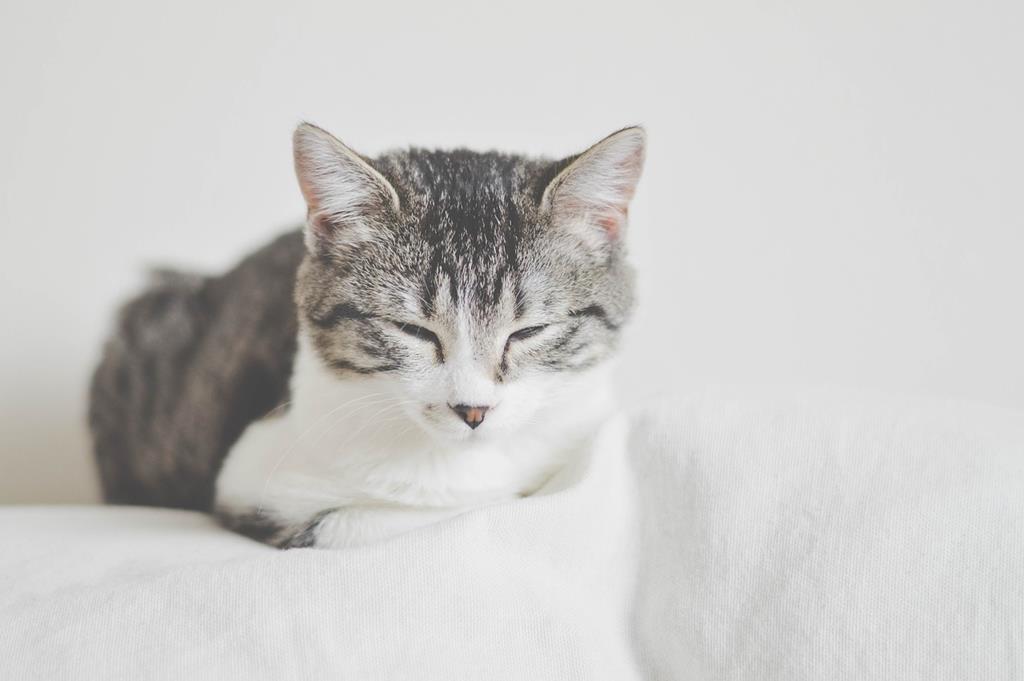To disinfect pet bedding, wash it in hot water with a pet-safe disinfectant and dry it thoroughly. Always follow the care label instructions for the best results.
Ensuring the cleanliness and hygiene of your pet’s bedding is crucial for their health and your home’s cleanliness. Pets often track in dirt and germs, which can accumulate in their sleeping areas. A regular cleaning routine helps prevent the spread of germs and parasites, and contributes to overall pet wellness.
Simple steps such as using hot water and appropriate disinfectants, alongside proper drying, can significantly reduce the presence of harmful bacteria and unwanted odors. A clean bed also provides a comfortable and safe environment for your pet to rest, promoting better sleep and well-being. Remember, consistency is key for maintaining a sanitary space for your furry friends. Choose pet bedding that’s machine washable for ease of cleaning, and always opt for non-toxic cleaning solutions to keep your pet safe.

Credit: www.linkedin.com
The Importance Of Clean Pet Bedding
Clean bedding is more than just a comfortable spot for your pet. It is crucial for their health and hygiene. Dirty bedding can become a breeding ground for harmful bacteria, fleas, and ticks. Regular cleaning eliminates these risks. It ensures your pet stays happy and healthy. Let’s dive into the benefits and preventative measures associated with keeping your pet’s bedding squeaky clean.
Health Benefits For Your Pet
Regularly disinfecting pet bedding promotes a healthy living environment. An environment free from allergens is especially important for pets with sensitive skin or allergies. Clean bedding can also enhance your pet’s rest, boosting their energy levels and overall well-being.
- Reduces allergic reactions — keeps dander and dust to a minimum.
- Improves sleep quality — a clean bed is more comfortable.
- Supports skin health — reduces the chance of skin infections.
Preventing Parasites And Infections
Pets are vulnerable to parasites and infections. These can often lurk in their bedding. Consistent cleaning helps prevent the spread of these nasty bugs.
| Parasite/Infection | Prevention Strategy |
|---|---|
| Fleas | Wash with hot water, use flea prevention cleaners. |
| Ticks | Regular checks, keep bedding dry and clean. |
| Bacterial Infections | Use antibacterial solutions, dry bedding thoroughly. |
With this knowledge, pet owners can create a safe and inviting space for pets. A space that both supports their health and contributes to a clean home environment.
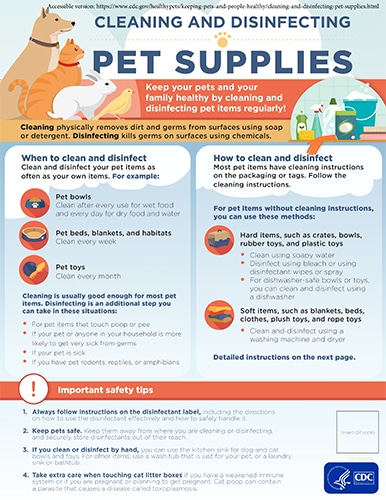
Credit: www.cdc.gov
Choosing The Right Disinfectant
Cleaning pet bedding is vital for your pet’s health. Not all disinfectants are safe for pets. It is crucial to choose a disinfectant that is effective and non-toxic to animals. Here, we will explore some of the best options for pet-safe disinfectants.
Pet-Safe Cleaning SolutionsPet-safe Cleaning Solutions
- Choose products labeled as ‘pet-friendly’ – These are designed to be safe around animals.
- Alcohol-free wipes can clean surfaces without the harsh effects of alcohol.
- Enzymatic cleaners break down stains and odors effectively and are non-toxic.
Natural Alternatives
Many natural solutions can disinfect bedding without harming your pet.
- Vinegar – Mix equal parts of water and vinegar to create a safe cleaner.
- Baking soda – Sprinkle on bedding to neutralize odors before washing.
- Lemon juice – A natural disinfectant that leaves a fresh scent.
Preparation For Bedding Disinfection
Keeping your pet’s bedding clean is crucial for their health and happiness. Before diving into the disinfection process, a few preparatory steps ensure a thorough clean. Let’s get started on these essential pre-disinfection tasks to make the bedding not just clean but also safe and comfortable for your furry friend.
Removing Loose Debris
First things first, shake off any loose fur, dirt, or debris from the pet bedding. Doing this outside is best to avoid spreading the mess indoors. Use a pet-safe vacuum or a lint roller to capture stubborn particles clinging to the fabric. This step makes the washing process more effective.
Pre-treating Stains
Bedding often has stains from mud, food, or accidents. Start by identifying any spots that need extra attention. Applying a pet-safe stain remover can make a big difference. Allow the solution to sit on the stain for a few minutes according to the product’s instructions. Gently brush the area to penetrate deep into the fibers before washing. This pre-treatment lifts stubborn stains and makes for a successful disinfection.
| Step | Action | Notes |
|---|---|---|
| 1 | Shake bed outside | Removes top layer of debris |
| 2 | Vacuum remaining particles | Helps with tiny dirt and fur |
| 3 | Apply stain remover | Focus on visible stains |
| 4 | Brush the area | Prepares fibers for wash |
Step-by-step Disinfection Process
Keeping your pet’s bedding clean is vital for their health. A regular deep clean kills germs and keeps your furry friend cozy. Follow these steps for effective disinfection.
Washing Machine Settings
Start with the right machine settings for thorough cleaning.
- Select a hot wash cycle – High temperatures kill most bacteria and viruses.
- Use a pet-safe detergent – Choose one that’s non-toxic and fragrance-free.
- Add a natural disinfectant – White vinegar or an oxy-based cleaner can boost cleaning power.
- Run an extra rinse cycle – This ensures all soap residue washes away.
Hand Washing Techniques
Sometimes hand washing is better for delicate bedding.
- Fill a basin with hot water – Use the hottest temperature you can handle.
- Stir in a pet-friendly detergent – Mix it well.
- Submerge the bedding completely – Let it soak for at least 15 minutes.
- Scrub any stains or soiled spots – Use a soft brush or cloth.
- Rinse thoroughly – Run the bedding under water until it’s soap-free.
- Add a vinegar rinse – Mix one part vinegar to three parts water for final disinfection.
Drying And Maintenance Tips
‘Drying and Maintenance Tips’ are vital for keeping your pet’s bedding clean and safe. After disinfecting the bedding, it’s crucial to dry it thoroughly. A good routine ensures bedding doesn’t become a breeding ground for germs or mildew. Let’s explore the best ways to manage this aspect of pet care.
Proper Drying To Prevent Mildew
Drying pet bedding properly is key to preventing mildew growth. Follow these simple tips:
- Use low heat – High temperatures can damage certain fabrics. Stick to a gentle cycle on a low or medium setting.
- Open Air – Whenever possible, let the bedding dry outdoors in the sunshine. Sunlight has natural disinfecting properties.
- Check Care Labels – Always adhere to the cleaning instructions on your pet’s bedding. Some materials may not be dryer-safe.
- Avoid Dampness – Ensure the bedding is completely dry to the touch. Any moisture can attract mold and mildew.
Regular Cleaning Schedule
Sticking to a cleaning schedule extends the life of pet bedding:
| Bedding Type | Cleaning Frequency |
|---|---|
| Beds with removable covers | Wash the cover weekly |
| Whole beds | Clean every two weeks |
| Blankets and throws | Wash 1-2 times per week |
Here are some added tips:
- Set Reminders – Mark dates on your calendar to ensure you don’t forget cleaning days.
- Maintain a Spare – Keep an extra set of bedding. This makes routine washing easier without leaving your pet without a comfy spot.
- Spot Clean – Quickly handle any spills or accidents. Immediate cleaning prevents stains and odors from setting in.
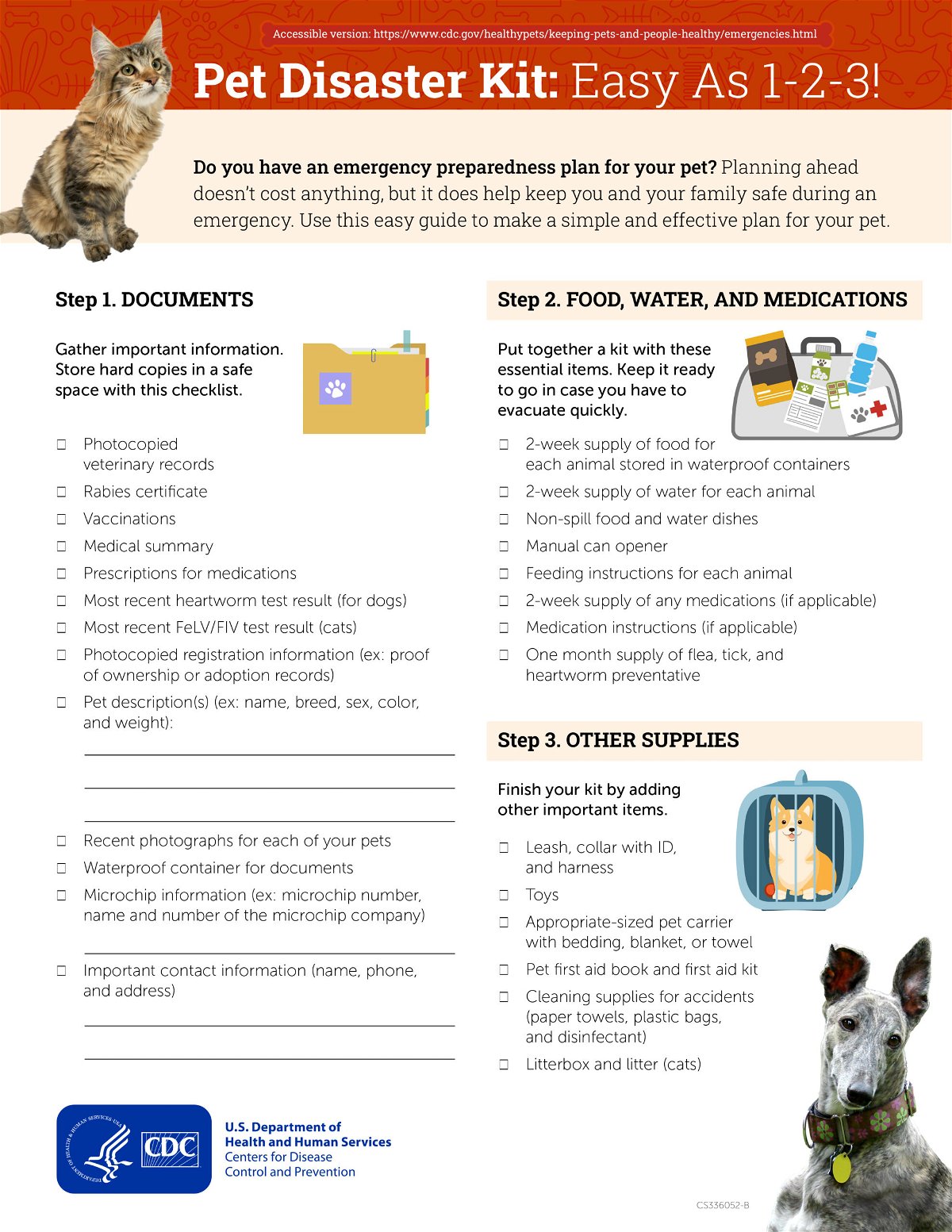
Credit: kesq.com
Ensuring Bedding Comfort Post-disinfection
Cleaning your furry friend’s bed is crucial for their health and well-being. But after a good wash and disinfection, it’s not just about making the bed clean—it needs to be comfortable too. Let’s look at how you can ensure that your pet’s bedding is cozy and inviting after a thorough cleaning.
Fluffing And Restoring Beds
After washing and disinfecting, bedding might lose its shape. Here’s how to fluff it back up:
- Give it a good shake: This helps loosen any clumps of filling.
- Squeeze and knead: Work through the bedding with your hands.
- Dry properly: Make sure it’s completely dry to prevent mold.
- Use dryer balls: They can help during the drying cycle to fluff the bedding.
Observing Pet Reactions And Preferences
Watch your pet’s behavior to ensure they’re happy:
- Monitor their first interaction: After restoring the bed, let your pet explore it.
- Note any hesitation: Are they avoiding the bed? It might still have a lingering smell.
- Offer their favorite toy: Encourage them to use the bed by associating it with positive things.
Remember, comfort leads to a happy, healthy pet.
Frequently Asked Questions For How Do You Disinfect Pet Bedding?
Can Vinegar Disinfect Pet Bedding?
Vinegar, a natural disinfectant, can be used to clean pet bedding. Mix equal parts water and vinegar, spray it on the bedding, then wash thoroughly. It’s safe for pets and eliminates odors.
What Temperature Kills Germs In Pet Beds?
Hot water, ideally above 140°F (60°C), is most effective for killing germs. Washing pet bedding at this temperature, followed by a stint in the dryer, can sanitize the fabric effectively.
Is Baking Soda Safe For Cleaning Pet Bedding?
Absolutely! Baking soda is safe and deodorizes pet bedding well. Sprinkle it on, let it sit for 15 minutes, then vacuum or wash it off. It’s non-toxic and pet-friendly.
How Often Should I Disinfect My Pet’s Bedding?
Disinfect pet bedding weekly to ensure it stays clean and hygienic. Regular cleaning prevents bacteria growth and keeps your pet’s sleeping area fresh and healthy.
Conclusion
Keeping your pet’s bedding clean is essential for their health and happiness. Implementing a routine with safe, effective disinfectants will make all the difference. Remember, a tidy bed equals a content, healthy pet. Embrace these steps, and you’ll master pet bedding hygiene with ease.
